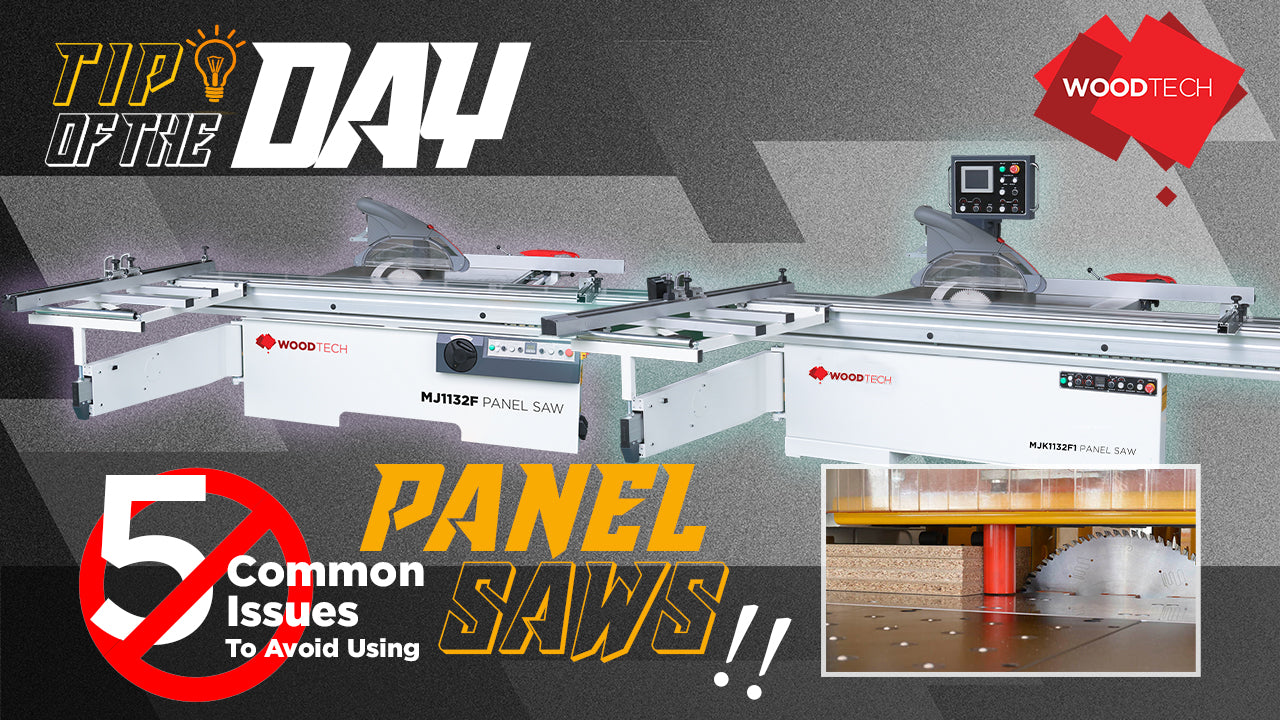When it comes to achieving the required cut in rigid materials with utmost precision, panel saws come in handy. Cutting through wood is one part of the task at hand, but the beautification of the end product is what meets the buyer’s eye. The use of panel saws at the industrial level is imperative. However, making its use ideal is something easier said than done. Several common issues arise while cutting with saws. Therefore, this guide will point out some of the renowned problems and walk you through their resolution, identifying the best practices.

Intensive Wear on Saw Teeth
This comes as one of the most common problems while using saw blades. The most significant wear is seen in the saw teeth. This could be a result of several reasons. Often, the speed of the blade is higher than what it should be. The speed of the blade is directly proportional to the wear and tear it receives. A speedy blade working consistently leads to its quick wear.

Moreover, another probable cause of this wear could be the feed rate being too low. This scenario leads to the blade rubbing more on the material than cutting it. This also leads to wear of the panel saw teeth at a rapid rate. You also must pay closer attention to the material you are working on. This is because if the material is too rigid, it could also lead to a quicker decline in the saw teeth’s quality.
Damage in Gullets
Gullets also are an integral part of a panel saw. A common problem saw operators face the cracks in gullets. As per the veterans, a gullet is defined as the space each saw tooth has in front of it so that the sawdust conveniently moves away from the blade. Multiple reasons can lead to cracks appearing on gullets.

The guide alignment not done correctly can lead to excessive damage in gullets, causing cracks to appear. Secondly, if the saw teeth keep contacting the guides of the blade repeatedly, it can also lead to the rapid depreciation of the gullets.
Offloading in the Last Part of the Cutting Cycle
The offloading in the last part of the cutting cycle is regarded against the industrial vitae rans' best practices for a panel saw operation. This is because when you keep offloading the amount in the cutting cycle, it increases the idle time of the panel saw process. We will tell you how to avoid this when we move to the tips for avoiding the common problems section.
Uneven Saw Teeth
While operating panel saws, you should keep a closer eye on the saw teeth. This is because the loss incurred by uneven teeth is insurmountable. It often leads to burning the wood panel and the saw blade. Other factors that can lead to burning include the machine speed being too high, an issue with the spindle of the equipment, or poor blade quality.

Improper Coolant Flow
If the coolant flow for your saw blade is not adjusted, it can cause you to consider the blade’s service life. This is because when operating with a saw blade, the coolant flows onto the material you are working on to lubricate it while keeping the temperature in check. If this is eliminated, the generated heat goes out of control, impacting the blade’s durability.
Now that we have identified the common problems let us move towards the tips that can be followed to avoid them.
Smart Planning and Organisation
A job well done always starts with efficient planning and organisation. You must know what you might fall into while working with saw blades. This requires special attention to the material you are working on regarding the level of abrasion. In addition, you also have to choose the blade carefully. This is because performance depends on various factors like the number of teeth, feed rate, and the speed at which you operate. A proper organisation as per the needs of the task is what gets you through the whole process in a smooth fashion.
Regular Cleaning and Maintenance
Per the industry's experienced professionals, regular maintenance is one of the best practices for a panel saw operation. This is because the equipment is prone to quick depreciation, considering the operational style. Material chips get stuck in the saw teeth and also take a toll when the lubrication is improper. As a result, rubbing on the material dominates cutting it.

Therefore, take 5-10 minutes to clean the panel saw at the end of your day. Apart from daily cleaning, maintenance involves keeping the equipment lubricated and labelling the equipment parts for easier identification and operation.
Operating at Correct Angles
Ensuring that the panel saw teeth and all other parts work longer, the angle at which you are operating also needs special consideration. This is because crosscutting tasks can go south if not appropriately handled. An improper angle leads to the unexpected movement of the material being worked on.

Efficient Destacking
Operator fatigue can be considerably curtailed by making use of destacking tools. Apart from that, the part throughput increases rapidly with the inclusion of freestanding tables and scissor lifts. This also comes as a best practice while operating with saw blades.
The Takeaway

The use of panel saws is imperative for achieving the perfect cuts, yet it requires consideration of various factors so that you extract the maximum potential out of it. In this article, we tried to highlight those factors so that you can ensure efficient saw blade operation and make them durable. In addition, we also included some valuable tips that can help you along the way. Wood Tech is also covered if you are looking for complete turnkey solutions for industrial use.

